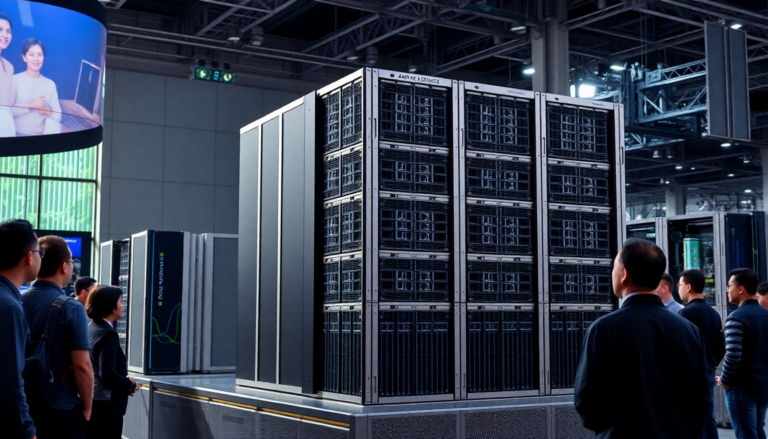Argomenti trattati
Innovation in technology often feels like a race where the finish line is always moving. At Computex, Pegatron showcased a remarkable advancement in AI infrastructure with its new rack-scale solution, which is set to redefine how we think about high-performance computing. This system, built around 128 of AMD’s cutting-edge Instinct MI350X accelerators, is not just a machine; it’s a glimpse into the future of AI inference and training applications. Imagine the raw power—enough to make even the most demanding workloads feel like a walk in the park!
The specs behind the performance
At the heart of Pegatron’s AS501-4A1/AS500-4A1 rack-scale system lies a carefully crafted architecture featuring eight 5U compute trays. Each tray is equipped with one AMD EPYC 9005-series processor and four MI350X accelerators, all liquid-cooled to maintain peak performance under intense loads. This isn’t just a technical choice; it’s a necessity in today’s data-driven world where every millisecond counts. The system’s design adheres to the OCP standards, making it a viable option for cloud datacenters, particularly those operated by giants like Meta.
What’s particularly interesting is how the machine handles connections. While it utilizes 400 GbE for interconnecting GPUs located in different chassis, the absence of proprietary switches for AMD’s Infinity Fabric connections does raise some eyebrows. It’s a stark contrast to Nvidia’s GB200/GB300 NVL72 platform that boasts a seamless 72 GPU interconnection via NVLink. Yet, Pegatron’s approach emphasizes versatility and adaptability, which might just be what the market needs.
Scalability and its implications
Despite its impressive specifications, the scalability of the Pegatron system invites scrutiny. With a maximum scale-up limit of eight GPUs, it appears more tailored for inference tasks and multi-instance training than for tightly synchronized large language model (LLM) training, where Nvidia really shines. This limitation could affect how organizations deploy this technology in real-world scenarios, especially as AI models continue to grow in complexity and size.
However, let’s not overlook the sheer potential of the system. The theoretical peak performance of 1,177 PFLOPS for FP4 compute is staggering. With each MI350X supporting up to 288GB of HBM3E, this setup boasts a total of 36.8TB of high-speed memory. This alone positions Pegatron’s offering as a formidable competitor against Nvidia’s current Blackwell-based GPUs, especially for AI models that demand vast computational resources.
The future of AI computing
In my view, Pegatron’s latest machine is a harbinger of change in the AI landscape. As businesses increasingly seek solutions that not only perform but also adapt to evolving needs, this rack-scale system could set the stage for a new era of AMD Instinct-based architectures. It’s a calculated move, aiming to challenge Nvidia’s long-standing dominance in the realm of AI solutions.
What does this mean for the industry? It signifies a shift, a wake-up call to players entrenched in the status quo. As many know, the tech landscape is dynamic, and today’s leading edge could quickly become yesterday’s news. Pegatron’s system might be just what the doctor ordered for companies looking to leverage AI without being locked into a single vendor’s ecosystem.
As we look ahead, it will be fascinating to observe how Pegatron’s innovations play out in the marketplace. Will this be the catalyst that encourages more widespread adoption of AMD solutions in data centers? Or will it face hurdles that limit its scalability and application? One thing is for sure: the competition is heating up, and the stakes have never been higher.

